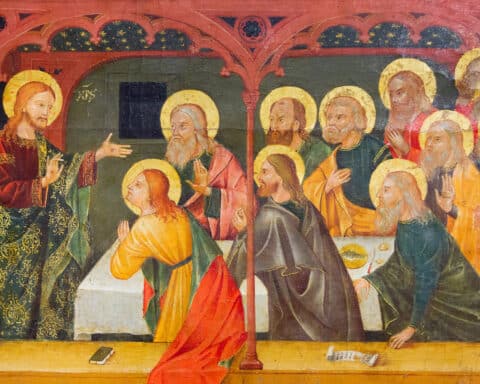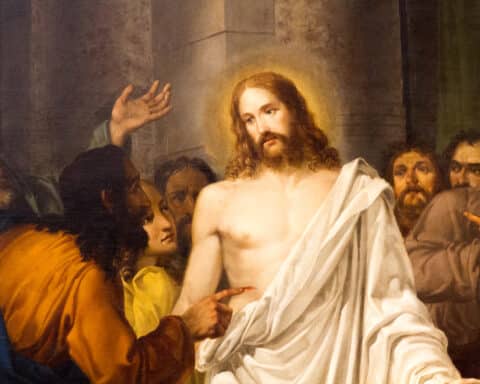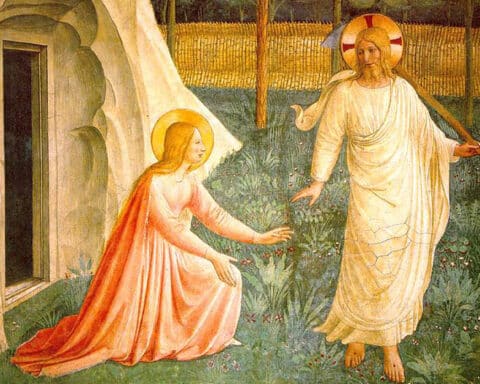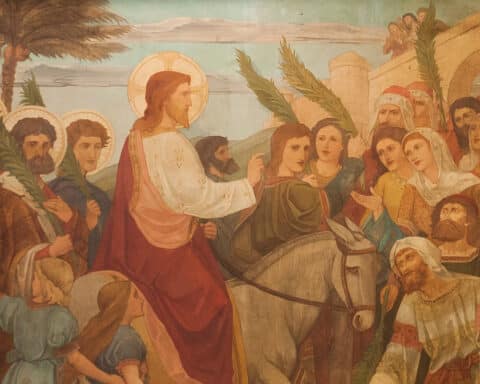
But what is the precise nature of this encounter?
During Easter, we contemplate what it means to encounter the risen Lord. The disciples are gathered in a hidden place. Their isolation has been interrupted by recent news given by the disciples who met Jesus in the breaking of the bread on the road to Emmaus.
The budding Church is abuzz, talking about the marvelous events that have unfolded in Christ. Can it be true that Jesus, the one who hung upon the tree of death, is now the tree of life?
Into the midst of this common proclamation, Jesus appears. The encounter with Christ is personal insofar as it involves our whole being. But, it is not individualistic. Jesus appears as the disciples are gathered together.
| Third Sunday of Easter – April 15, 2018 |
|---|
|
ACTS 3:13-15, 17-19
PS 4:2, 4, 7-8, 9
1 JN 2:1-5
LK 24:35-48
|
Initially, no one recognizes the risen Lord. In the Greek, the name Jesus is not even used. The encounter with Christ is always first a moment of bedazzlement. For what is revealed is the wondrous love of the Word made flesh, the splendor of the Father. Who can gaze upon such love and grasp it?
Jesus speaks first: “Peace be with you” (Lk 24:36). What is this peace that Jesus offers? The encounter with Christ promises the possibility of harmony. It is the harmony of men and women gathered together in worship around the living God. It is the harmony made possible by God’s own peace, the conquering of sin and death through Jesus Christ.
This proclamation of Jesus leads not to comfort but a new fear. This is not like the earlier fear that caused the disciples to gather in isolation in the upper room. It is reverence before the risen Lord. If Jesus is the one who has been raised from the dead, then the disciples stand not before a ghost but God.
But the encounter with Christ is not a mental one. It is not reducible to a feeling of consolation or fear before the tremendous power of God. To encounter Christ is to meet the body of the Lord as body!
It is to place one’s fingers into the wounds of the risen and, thus, embodied Jesus. Jesus is not an abstraction. He is alive in the Church.
This proclamation — this awareness of Jesus as present among us — leads to joy and amazement among the disciples gathered together.
Notice then that Jesus points to his bodily presence by eating a bit of fish. Likely in the early Church, the Eucharist was celebrated in the context of a common meal. That’s why St. Paul rails against the rich members of the Church at Corinth for arriving early and getting drunk.
The full encounter with Jesus is thus not an individual one. In the Gospel of Luke, it is an encounter that is realized most fully in the breaking of the bread around the altar.
On this altar, we eat and drink the living God. And through this encounter, we come to know with our very bodies the meaning of all the Scriptures: Love wins!
The encounter with Christ ends not with another turn inward. Instead, the encounter with Christ functions as that which is to draw all nations to worship before the living God.
The disciples witnessed the coming of the risen Lord not for their own benefit alone but to share with the entire world the peace of God.
This is the pattern of the encounter with Christ. Easter is intended to form us to recognize this pattern here and now.





